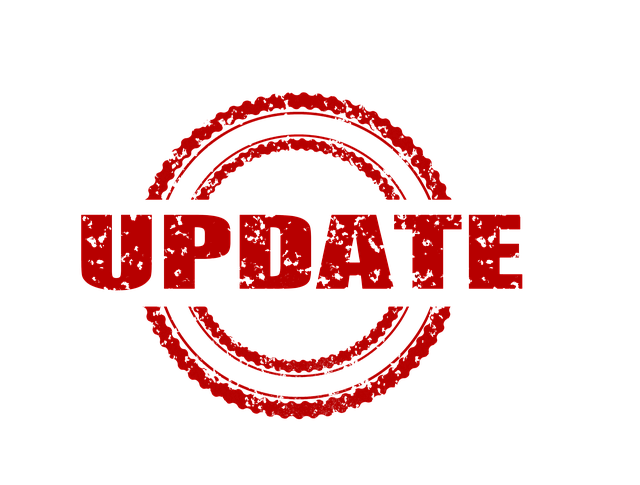In the digital age, Select Over-the-Air Updates (OTA) transform content delivery on smart TVs and cable boxes, offering seamless, efficient firmware improvements. OTA updates enhance user experience, fix bugs, and improve performance while streamlining developer tasks. Consumers benefit from smoother operations, new apps, and better picture quality, keeping devices up-to-date. For content providers, OTA updates eliminate manual downloads, ensuring users access latest features for enhanced experiences. By following a structured guide, organizations can implement OTA updates effectively and measure success through KPIs like engagement rates. Future trends include remote software installation and AI-driven bug prediction, further enhancing user-focused digital content refresh.
In today’s digital landscape, keeping content fresh and engaging is paramount. This comprehensive guide delves into the essential practice of Digital Content Refresh, exploring strategies that enhance user experience and drive better results. We’ll navigate through understanding specific needs, leveraging Over-the-Air (OTA) updates for seamless implementation, and measuring success. From selecting effective strategies to future trends, this article provides a step-by-step guide to staying ahead in the ever-evolving digital content realm.
- Understanding Digital Content Refresh Needs
- Benefits of Over-the-Air Updates for Content
- Selecting Effective Digital Content Refresh Strategies
- Implementing OTA Updates: Step-by-Step Guide
- Measuring Success and ROI of Content Refresh
- Future Trends in Digital Content Refresh
Understanding Digital Content Refresh Needs

In today’s digital age, understanding the evolving needs of content refresh is paramount, especially in the realm of smart TVs and cable boxes. The traditional method of distributing content through physical updates has given way to more efficient and dynamic strategies. One such game-changer is the implementation of Select Over-the-Air Updates (OTA). This innovative approach allows for seamless and continuous improvements to firmware, ensuring that devices like smart TVs receive the latest features and security patches without any hassle. By leveraging OTA, content providers can remotely deliver updates, streamlining the process for both users and developers.
The benefits of air updates for smart TVs and a cable box firmware overhaul are numerous. It not only enhances the overall user experience but also provides an opportunity to address bugs and security vulnerabilities promptly. With smart TVs over-the-air updates, consumers can expect smoother performances, access to new applications, and improved picture quality without requiring any additional equipment or complex installation processes. This evolution in content distribution ensures that devices remain up-to-date, reflecting the latest technological advancements and user preferences.
Benefits of Over-the-Air Updates for Content

The benefits of Over-the-Air (OTA) Updates for digital content and devices are numerous, especially when it comes to keeping your content fresh and engaging. With OTA updates, content providers can push new releases, bug fixes, and enhancements directly to users’ wireless devices, eliminating the need for manual downloads or complex installation processes. This ensures that users always have access to the latest features, which is crucial in today’s fast-paced digital landscape.
For example, consider Directv Genie box updates. By enabling OTA firmware syncs, service providers can seamlessly update their customers’ set-top boxes without disrupting their viewing experience. This not only improves device performance but also opens up new possibilities for content delivery and personalization, fostering a more dynamic and interactive user environment.
Selecting Effective Digital Content Refresh Strategies

Selecting effective digital content refresh strategies is a key aspect of keeping your audience engaged and up-to-date. One powerful method to consider is over-the-air updates, which allow for seamless and efficient distribution of fresh content directly to end users’ devices. This approach, often employed in technologies like satellite TV software refreshes and network broadcast software, ensures that viewers receive the latest shows, movies, or information without any manual intervention.
When implementing remote system updates, it’s crucial to balance frequency with user experience. Regular but not excessive refreshes can maintain viewer satisfaction while minimizing potential disruptions. By leveraging these remote system updates, content providers can effectively manage large-scale distribution, ensuring a consistent and high-quality viewing experience across diverse devices.
Implementing OTA Updates: Step-by-Step Guide

Implementing Over-the-Air (OTA) updates is a seamless and efficient way to maintain and update digital content across various devices, such as cable TVs, streaming boxes, and set-top boxes. Here’s a step-by-step guide to help you navigate this process smoothly:
1. Identify Compatibility: Ensure that all your supported devices are capable of receiving OTA updates. This involves checking the hardware specifications and software versions to guarantee compatibility with the latest update protocols. Direct broadcast software refreshes rely on these checks to avoid disrupting existing functionalities.
2. Prepare Update Infrastructure: Set up a robust network infrastructure to handle the simultaneous updates across multiple devices. This may involve optimizing your network bandwidth, ensuring stable connectivity, and implementing security measures to protect against potential vulnerabilities during the update process. Cable TV firmware overhauls often necessitate such preparations to minimize service interruptions for subscribers.
3. Develop Update Mechanisms: Create efficient mechanisms for delivering and installing updates. Utilize secure protocols like HTTPS for data transmission and consider employing digital signature verification to ensure the integrity of the update packages. Firmware refresh for streaming devices can benefit from these measures to maintain device security and performance.
4. Test and Validate Updates: Before rolling out OTA updates, conduct thorough testing in a controlled environment. Simulate various scenarios and device configurations to identify potential issues early on. This validation step is crucial to prevent system crashes or unexpected behavior after deployment.
5. Implement the Update: Once testing is complete, initiate the OTA update process. Communicate clearly with your users about the upcoming update, its benefits, and any expected downtime. During the update, monitor devices for success or failure, addressing any issues promptly.
6. Post-Update Monitoring: After deployment, closely watch device performance and user feedback. This monitoring phase helps identify any unforeseen issues that may arise from the update. Regularly collect and analyze user reports to inform future updates and improvements.
Measuring Success and ROI of Content Refresh

Measuring the success and return on investment (ROI) of a digital content refresh is crucial for any organization looking to optimize its strategy. By implementing Over-the-Air (OTA) updates, such as those offered by AT&T Uverse Software Downloads or Verizon Fios Air Updates, businesses can ensure efficient and effective distribution of fresh content. This method eliminates the need for manual downloads, streamlining the process and reducing potential errors.
To gauge ROI, several key performance indicators (KPIs) should be monitored post-refresh. These include click-through rates, user engagement metrics, conversion rates, and retention levels. Analyzing these data points allows for a comprehensive understanding of how the updated content is performing and whether it is achieving the desired goals. By continuously tracking and optimizing based on these insights, organizations can maximize their investment in digital content refresh initiatives.
Future Trends in Digital Content Refresh

The future of digital content refresh is set to be even more dynamic and user-centric. One prominent trend is the increased adoption of Select Over-the-Air Updates, allowing devices like streaming platforms to receive new firmware and software directly from the internet, ensuring a seamless experience for users without the need for manual downloads. This technology streamlines the update process and reduces potential compatibility issues.
Additionally, remote software installation guides will play a significant role in simplifying complex updates, especially for older or less tech-savvy users. These guides can walk individuals through the refresh process, making it accessible to a broader audience. Furthermore, firmware refresh for streaming devices will continue to evolve, incorporating AI and machine learning capabilities to predict and proactively resolve bugs, enhancing the overall stability and performance of live TV apps and other media services.
Digital content refresh is no longer an option but a necessity, especially with rapid technological advancements. By leveraging Over-the-Air (OTA) updates, organizations can ensure their content remains relevant and engaging. The benefits of OTA updates, from enhanced user experience to cost-efficiency, make it a game-changer in the digital landscape. As we move forward, staying agile and adopting future trends like real-time content personalization will be key to maintaining a competitive edge. By selecting effective strategies, implementing them systematically, and measuring success, businesses can harness the full potential of digital content refresh, ultimately driving higher engagement and ROI.
